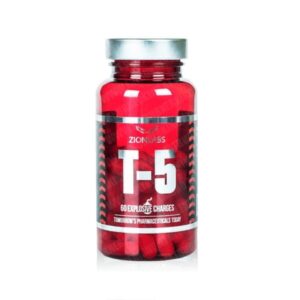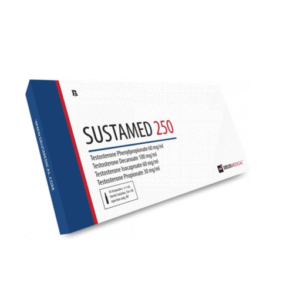Insulin Aspart | Insulin Aspart Sanofi | What is insulin?
Insulin is a hormone that regulates blood sugar levels. It is secreted by the pancreas in response to an increase in blood sugar. This secretion triggers a cascade of events that leads to a decrease in blood sugar. The absence of insulin production or its improper use by the body leads to type 1 or type 2 diabetes.
Permanently present in the blood, secreted in small doses 24 hours a day, insulin secretion increases after carbohydrate consumption to maintain blood sugar, the blood glucose level, at around 1 g/l.
Order cheap Aspart insulin injections discreetly online without a prescription, safely and reliably through our Dutch pharmacy.
Aspart Insulin
Insulin asparte Sanofi is a medication used to control blood sugar levels in people with diabetes from the age of one year. Insulin asparte Sanofi is a biosimilar medication . This means that insulin asparte Sanofi is very similar to another biological medication already approved in the EU. The reference medication for insulin asparte Sanofi is Novorapid insulin.
Insulin aspart Sanofi contains the active substancesuline aspart, fast-acting insulin.
Operation
People with diabetes have high blood sugar levels, either because their bodies don’t produce enough insulin or because they are unable to use insulin effectively.
The active ingredient in Sanofi insulin aspart is a form of insulin that is absorbed more quickly by the body than regular insulin and therefore can work faster. It helps control blood sugar levels, alleviating diabetes symptoms and reducing the risk of complications.
Gain
Laboratory studies comparing insulin aspart sanofi with novorapid have shown that the active substance of insulin aspart sanofi is very similar to that of novorapid in terms of structure, purity, and biological activity.
Studies have also shown that administration of insulin aspart Sanofi produces an active substance in the body, similar to that of Novorapid administration.
In addition, a study involving 597 patients whose diabetes had already been treated with insulin showed that six months of treatment with insulin aspart sanofi combined with long-acting insulin (glargine insulin) was also effective in controlling blood sugar levels compared to insulin aspart sanofi combined with novorapid and novorapid and glargine insulin.
The mean HbA1C percentage was initially 8.00% in patients treated with insulin aspart Sanofi and 7.94% in those treated with Novorapid; after six months it was 7.62% and 7.64%, respectively.
Dosage
In practice, glycemic targets are expressed as glycated hemoglobin (HbA1C), which reflects the glycemic balance over the past three months. Its level is strongly correlated with complications.
- The normal percentage is 6% and ideally you want to get closer to this figure.
- A rate of 7% is the usual target for a young patient, while an 8% rate is sufficient for an older person. For example, to achieve 7%, the average empty blood sugar level should be approximately <1.20 g/L and <1.40 g/L after a meal. The blood sample is taken on an empty stomach, in the laboratory, and in the crook of the elbow. The results are generally available during the day.
- According to the WHO, diabetes is diagnosed when blood sugar on an empty stomach is greater than or equal to at least two percent of 1.26 g/L of blood. Below 0.45 g/L of blood, hypoglycemia occurs.
What does insulin do
Insulin regulates blood sugar levels through its hypoglycemic effect.
Insulin is a peptide with two amino acid chains that functions as a hormone. It is synthesized by the pancreas itself in specialized cells (beta cells) within a structure of the pancreas called the islets of Langerhans.
The pancreas is the organ responsible for regulating blood sugar levels, that is, the level of glucose in the blood. Its function is to respond:
- Hypoglycemia by synthesizing glucagon, and
- to hyperglycemia by separating insulin.
After secretion, after a meal, for example, insulin allows blood glucose to be distributed to the cells of the organism (particularly muscle cells and brain cells) to be converted there into energy useful for cellular functions.
When the amount of circulating glucose exceeds the body’s cellular needs, insulin directs excess glucose to the liver, where it is stored as glycogen.
Conversely, in the event of low blood sugar (hypoglycemia), the pancreas synthesizes glucagon in the pancreatic alpha cells. This other hormone acts locally on the liver to break down the glucose and glycogen, which is then released into the bloodstream to restore blood sugar levels sufficient to meet the body’s needs.
Insulin therefore plays a central role in regulating blood sugar levels. There are two pathological situations (type 1 and type 2 diabetes) in which insulin no longer ensures its function:
- Insulin’s loss of response, defining type 2 diabetes.
- The absence of insulin secretion by the pancreas, which defines type 1 diabetes.
Insulin resistance
In some individuals, usually quite old and overweight, the body develops insulin resistance which can lead to type 2 diabetes in other words, despite the continuous production of insulin by the pancreas, glucose is no longer assimilated and remains at a high level in the blood.
Insulin resistance results from a complex metabolic disorder that affects all three insulin target tissues: skeletal muscle, adipose tissue, and liver. The molecular mechanisms responsible for insulin resistance are not fully understood.
On the other hand, the correlation between the amount of deep abdominal fat (as opposed to subcutaneous fat) and insulin resistance appears to be clearly established.
This resistance forces the pancreas to produce more and more insulin to lower blood sugar levels, leading to the beta-cells in the pancreas becoming exhausted and less effective. Combined, insulin resistance and the malfunctioning of pancreatic function lead to chronic hyperglycemia, which defines type 2 diabetes.
Injecting Insulin
Insulin produced by the pancreas in a healthy individual is essential for the proper functioning of the body. In the event of an error or deficiency in production, it is therefore necessary to provide the body with an external insulin supply, which can compensate for the absence of a naturally synthesized hormone and replace its function.
Two main methods allow insulin to be administered via subcutaneous injection: using a pen (or syringe) or an insulin pump (continuous insulin delivery). The choice of method depends on several parameters, including the number of insulin injections required per day, the stability of diabetes (whether blood sugar levels fluctuate or not), and patient preferences.
The attending physician or diabetologist will guide the patient by informing him about the advantages and disadvantages of each method, and will help him choose the injection method that best suits his diabetes and his lifestyle.
In any case, the use of a blood sugar monitoring system is necessary to adjust the amount and frequency of insulin injections. Today, some diabetics who require insulin therapy benefit from a subcutaneous glucose sensor (on the arm), allowing them to monitor their glucose levels without needing to bite for each measurement.
Conservation
Keep the insulin bottle you use each day at room temperature. Store stocks in the refrigerator before use. Do not leave the bottles in the sun. Cold and frost destroy the effectiveness of insulin.



